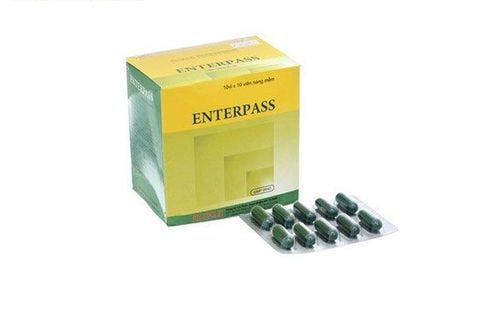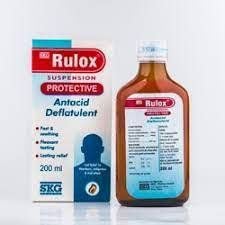This is an automatically translated article.
Myeracid helps support digestive tract problems, relieve symptoms of indigestion, abdominal bloating, flatulence, heartburn, or worse such as stomach burning pain, epigastric burning and other related disorders. to the stomach and duodenum. Follow the article below for more details about the drug Myeracid.
1. Learn about Myeracid
Myeracid is a drug belonging to the group of gastrointestinal drugs, with ingredients including Aluminum hydroxide, magnesium hydroxide, and Simethicone. The drug is prepared in the form of chewable tablets and canned according to the specification of 500 chewable tablets/bottle/box.
2. What are the effects of Myeracid?
Myeracid is an antacid and belongs to the group of gastrointestinal drugs. Myeracid is commonly known for a number of effects related to digestive problems, stomach - duodenum as follows:
Helps relieve and soothe symptoms: heartburn, heartburn, bloating, indigestion caused by increased stomach acid; Prevention and treatment of peptic ulcers and bleeding caused by stress. Support the treatment of gastroesophageal reflux disease - oesophagitis. Hyperphosphatemia: Same low phosphate diet.
3. Dosage and way of taking Myeracid
3.1 How to use Myeracid is a chewable tablet that can be taken orally directly, the time to take can be even on an empty stomach, in many cases, you must chew the tablets before swallowing otherwise the medicine may not Dissolves completely in the stomach before entering the small intestine. Regarding the specific dosage and the most optimal time, you should consult your doctor for maximum effectiveness.
Digestive disorders and indigestion: Should not be used continuously and lasts more than 2 weeks. in 4-6 weeks. 3.2 Dosage Normally, each drug will have a dose depending on the patient's condition and the user's age. You can refer to some dosages below:
Used to treat stomach ulcers: Children: Use 5 - 15ml, aluminum hydroxide suspension, time to drink is 1 to 3 hours after meals and at bedtime or every 3 - 6 hours;
Prevention of gastrointestinal bleeding: Children: 2 - 5 ml/dose, 1 - 2 hours/time.
Older children: 5 - 15ml/dose, every 1-2 hours/time.
Adults: 30 - 60ml/dose, every 1 hour.
Maintain gastric pH > 5 should adjust the dose;
Hyperphosphatemia: Children: 50 - 150 mg/kg/24 hours, 4 to 6 hours apart and divided into small doses each time;
Adults: 500 - 1800 mg, 3 - 6 times/day, preferably with meals or within 20 minutes after eating;
Used for antacids: Adults: 30ml, aluminum hydroxide suspension, at 1-3 hours after eating and at bedtime.
4. Possible side effects when taking Myeracid
When taking the drug, some unwanted effects may occur, you need to pay attention to have a timely treatment plan:
Encephalopathy, osteomalacia, dementia and small red blood cell anemia have occurred in people with chronic renal failure... If the drug is used for a long time and in high doses, it may cause hypophosphataemia; People with high blood urea syndrome may have aluminum poisoning or osteomalacia; Common side effects: constipation, acrid mouth, hard abdomen, solid stools, nausea, vomiting, white stools....
Uncommon: Decreased blood phosphate, decreased blood magnesium.
Special note: Do not use the drug for people with weakness, kidney failure, alkalosis and increased blood Mg.
5. Note for pregnant and lactating women
It is not recommended to use Myeracid for pregnant and lactating women. The drug can cause adverse effects on the fetus such as malformations, worse than miscarriage at any stage of pregnancy, especially in the first 3 months. Breastfed babies may be affected by the drug passing through breast milk.
If you have to take medicine, you need to consult your doctor, pharmacist before making a decision. When you see any abnormal signs, you should immediately notify the nearest doctor or medical facility for monitoring and support, ensuring safe drug use. Above is the information about the main use of Myeracid, patients should read the instructions carefully before using to achieve the best effect in the treatment of the disease.













